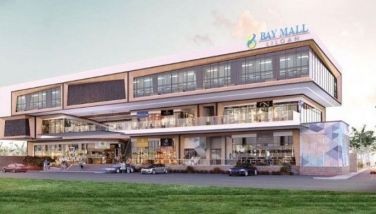In Cebu: Enterprising Maranaos enjoy doing business
October 18, 2006 | 12:00am
We call it as the Queen City of the South, the land where most people set foot to push their luck. As an industry-driven province, people from all walks of life coming from the various nooks of this archipelagic country are lured to startup an entrepreneurial lifestyle here.
The Maranaos are not an exemption. Fed up with the difficulties and the chaotic environment of Mindanao, these Maranaos managed to survive by moving about from one place to another.
Mindanao is populated with different tribes - Tausug, Higaonon, Hiligaynon and Maranao to name a few. Among the tribes, the Maranaos are the entrepreneurial ones and are already distributed all over the country.
Maranao.com states that majority of the Maranaos are found in Lanao del Sur while the rest are in Lanao del Norte and Cotabato City, still these places are in Mindanao. But now, some have been living as transients in other parts of the Philippines and that includes Cebu.
"Dili ko ganahan mu balik sa among lugar kay gubot ug gusto pud ko ma-independent." (I don't want to go back to our place because it is congested and I want to be independent), said Hanifah Daragangan, a Maranao who has been here in Cebu for five months.
Daragangan came in Cebu last February. One month after, she decided to put up an establishment. "Ang puhunan ko is P10, 000." (My capital was P10,000). She rents a stall at SM and sells accessories.
"Nung April 2 talaga ako nag simulang magbenta. Sa simula maganda yung kita, umaabot pa nga ng five thousand (5000) pesos, dun ko na kinukuha ang pambayad sa rent. Ang rent is four hundred fifty (450) pesos a day." (I started selling last April 2. At first the revenue was good, it even reached five thousand (5000) pesos, it is where I get the payment for the rent. The rent is four hundred fifty (450) pesos a day), she said.
At first the business was smooth sailing, but like any other businesses, Daragangan's business experienced instability. "Pagka May 9 pina-pull out lahat ng mga nag re-rent ng stalls sa SM. Kaya lumipat ako sa Ayala. Naki-share ako sa isang friend kasi mahal yung rent sa Ayala, P1000 a day. For 15 days dun ako nag tinda. Tapos pina-pull out na naman kami sa Ayala. Bumalik ako sa SM, tapos ganun ulit ang nangyari."(On May 9 all the tenants renting a stall at SM were pulled out. So I transferred at Ayala. I shared a stall with my friend because the rent is expensive, one thousand (1000) pesos a day. For 15 days I sell there. Then we were pulled out at Ayala, I went back at SM. Still the same thing happened), Daragangan said. Her want of new environment that gives economic growth and security guides her to be determined.
"Mahirap din dito sa Cebu, kaya nga pag may malaki na akong pera na pang-puhunan gusto kong mag transfer sa Greenhills." (It is also difficult here in Cebu, that is why if I will have enough capital I want to transfer to Greenhills), concluded Daragangan.
If Daragangan experienced hardships, Omar Sarip has a different encounter.
Omar Sarip has been here in Cebu for six years already. "Ni balhin ko diri kay samok didto sa amoa. Maau dri kay naay nga malls nga pwede nimo ka suruyan." (I transferred because it is already chaotic in our place. It is nice here because there are malls where you can stroll around), Sarip said.
Sarip has been in the business for three years. Before he used to sell CD's and now he has a cell phone shop at Colon Street. "Lisud pud biya ang akong business kay naay mga snatchers na ibaligya dri ang ilang na snatch na phone daun pag naay maka balo na mga pulis kami ang mu atubang sa ila." (My business is also difficult because there are snatchers who sell their snatched phone here and if police know about it we are the one who will face them).
Asked if he will still go back to his hometown he said "only during special occasions". "Kung ipa-rate ko sixty percent (60%) dri, forty percent (40%) didto." (If I were to rate, 60 percent (60%) is here and forty percent (40%) is there), said Sarip.
"Pumunta ako dito sa Cebu dahil nandito ang mga relatives at mga kapatid ko." (I came here in Cebu because my relatives and siblings are here), said another Maranao, who agreed to talk on the condition of anonymity. She said that settling in Cebu is one of the very best things she ever did. Cebu has given her a more comfortable and economically stable life. Within her one year of stay in Cebu she has already put up an establishment. Asked if she will still go back to her hometown, she said the same answer with Sarip. "Umuuwi lang ako pag may special occasions." (I only go home during special occasions), she said.
The Maranaos are famous for their artworks, sophisticated weaving, wood and metal craft, and their epic literature. Their business-minded trait is what sets them apart from the other Muslims.
The word Maranao means "People of the Lake", referring to the indigenous people who inhabited the land around Lake Lanao whose principal town is Marawi City.
The Maranaos are not an exemption. Fed up with the difficulties and the chaotic environment of Mindanao, these Maranaos managed to survive by moving about from one place to another.
Mindanao is populated with different tribes - Tausug, Higaonon, Hiligaynon and Maranao to name a few. Among the tribes, the Maranaos are the entrepreneurial ones and are already distributed all over the country.
Maranao.com states that majority of the Maranaos are found in Lanao del Sur while the rest are in Lanao del Norte and Cotabato City, still these places are in Mindanao. But now, some have been living as transients in other parts of the Philippines and that includes Cebu.
"Dili ko ganahan mu balik sa among lugar kay gubot ug gusto pud ko ma-independent." (I don't want to go back to our place because it is congested and I want to be independent), said Hanifah Daragangan, a Maranao who has been here in Cebu for five months.
Daragangan came in Cebu last February. One month after, she decided to put up an establishment. "Ang puhunan ko is P10, 000." (My capital was P10,000). She rents a stall at SM and sells accessories.
"Nung April 2 talaga ako nag simulang magbenta. Sa simula maganda yung kita, umaabot pa nga ng five thousand (5000) pesos, dun ko na kinukuha ang pambayad sa rent. Ang rent is four hundred fifty (450) pesos a day." (I started selling last April 2. At first the revenue was good, it even reached five thousand (5000) pesos, it is where I get the payment for the rent. The rent is four hundred fifty (450) pesos a day), she said.
At first the business was smooth sailing, but like any other businesses, Daragangan's business experienced instability. "Pagka May 9 pina-pull out lahat ng mga nag re-rent ng stalls sa SM. Kaya lumipat ako sa Ayala. Naki-share ako sa isang friend kasi mahal yung rent sa Ayala, P1000 a day. For 15 days dun ako nag tinda. Tapos pina-pull out na naman kami sa Ayala. Bumalik ako sa SM, tapos ganun ulit ang nangyari."(On May 9 all the tenants renting a stall at SM were pulled out. So I transferred at Ayala. I shared a stall with my friend because the rent is expensive, one thousand (1000) pesos a day. For 15 days I sell there. Then we were pulled out at Ayala, I went back at SM. Still the same thing happened), Daragangan said. Her want of new environment that gives economic growth and security guides her to be determined.
"Mahirap din dito sa Cebu, kaya nga pag may malaki na akong pera na pang-puhunan gusto kong mag transfer sa Greenhills." (It is also difficult here in Cebu, that is why if I will have enough capital I want to transfer to Greenhills), concluded Daragangan.
If Daragangan experienced hardships, Omar Sarip has a different encounter.
Omar Sarip has been here in Cebu for six years already. "Ni balhin ko diri kay samok didto sa amoa. Maau dri kay naay nga malls nga pwede nimo ka suruyan." (I transferred because it is already chaotic in our place. It is nice here because there are malls where you can stroll around), Sarip said.
Sarip has been in the business for three years. Before he used to sell CD's and now he has a cell phone shop at Colon Street. "Lisud pud biya ang akong business kay naay mga snatchers na ibaligya dri ang ilang na snatch na phone daun pag naay maka balo na mga pulis kami ang mu atubang sa ila." (My business is also difficult because there are snatchers who sell their snatched phone here and if police know about it we are the one who will face them).
Asked if he will still go back to his hometown he said "only during special occasions". "Kung ipa-rate ko sixty percent (60%) dri, forty percent (40%) didto." (If I were to rate, 60 percent (60%) is here and forty percent (40%) is there), said Sarip.
"Pumunta ako dito sa Cebu dahil nandito ang mga relatives at mga kapatid ko." (I came here in Cebu because my relatives and siblings are here), said another Maranao, who agreed to talk on the condition of anonymity. She said that settling in Cebu is one of the very best things she ever did. Cebu has given her a more comfortable and economically stable life. Within her one year of stay in Cebu she has already put up an establishment. Asked if she will still go back to her hometown, she said the same answer with Sarip. "Umuuwi lang ako pag may special occasions." (I only go home during special occasions), she said.
The Maranaos are famous for their artworks, sophisticated weaving, wood and metal craft, and their epic literature. Their business-minded trait is what sets them apart from the other Muslims.
The word Maranao means "People of the Lake", referring to the indigenous people who inhabited the land around Lake Lanao whose principal town is Marawi City.
BrandSpace Articles
<
>
- Latest
- Trending
Trending
Latest
Trending
Latest
Recommended






















